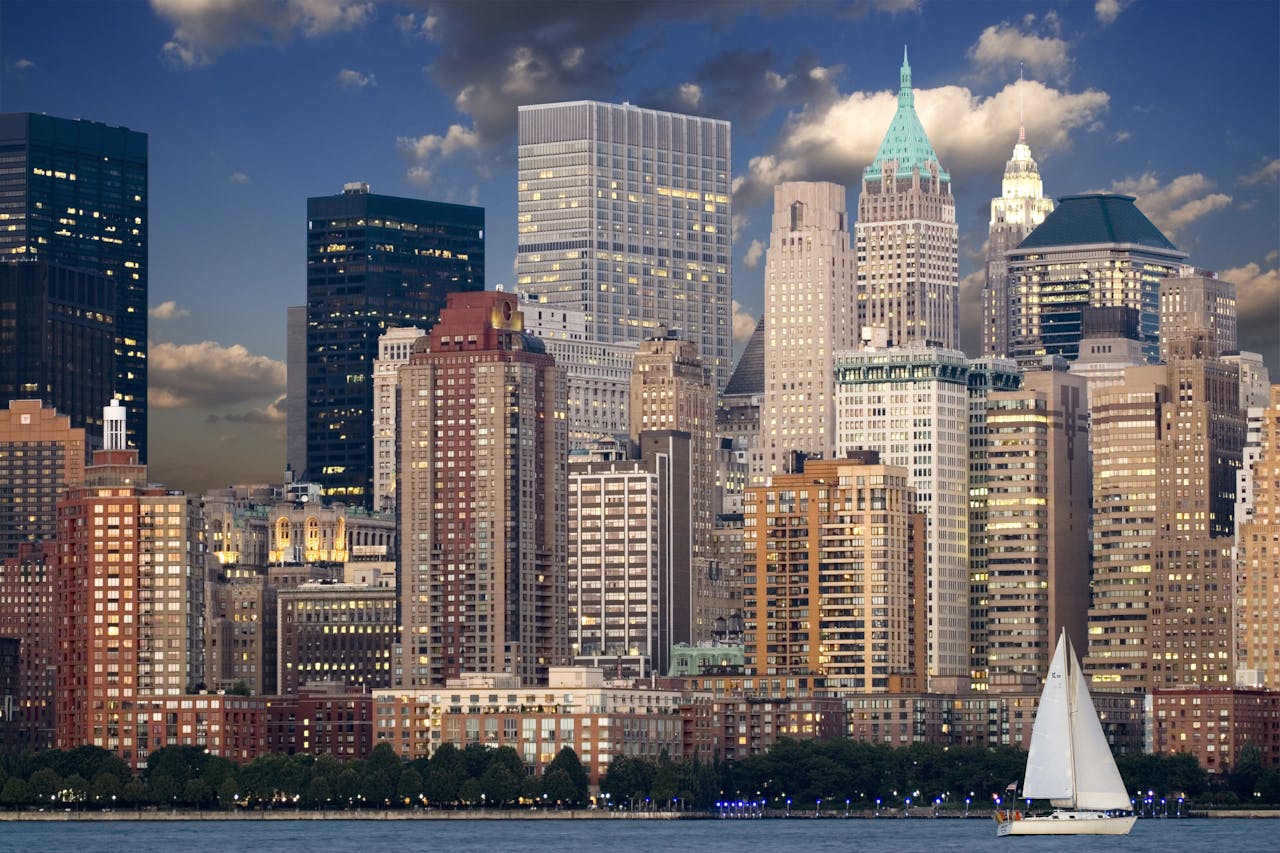Allow`s be clear: web design is an involved technique that can take a life time to master. As if that weren`t hard sufficient, it`s also a field that`s advancing every second as modern technology maintains advancing– picture da Vinci`s aggravation if people grumbled the Mona Lisa “looked old” after simply 5 years.
Website design is something that basically everybody on the managerial end of a service needs to handle, yet only design professionals really recognize. If you desire a great website design, you need to find out the basics, so you can interact desire you desire. Even if you`re employing a specialist to develop your web page for you, you still need some background information to determine a talented web designer from a sub-par one and describe what you require them to do.
We know how difficult it is for non-designers to master this entire website design thing, so we developed this helpful guide to walk you through the essentials. Right here are the top 10 web design suggestions you need to find out about (plus some beneficial dos and do n`ts), split right into 3 classifications: Make-up, Appearance as well as Functionality. Whether you`re hiring a designer or DIY-ing, examine your last website design for these 10 principles.
Make-up.
Learn more: Top Phoenix Web Design by Salterra
5 web design ideas
1. Clear out the mess.
Initially, allow`s address one of the most typical novice mistakes in web design: a cluttered display. Most individuals have a list of everything they desire on their site, as well as without recognizing any type of much better, they simply toss everything on display– and on the very same web page.
Essentially, every element you include in your web design thin down all the others. If you include too many disruptive elements, your customer does not understand where to look as well as you lose a systematic experience. By comparison, if you only consist of the needed components, those elements are much more powerful considering that they don`t have to share spotlight.
Much more white room indicates less clutter and that`s what actually matters in a minimalist, tidy web design.
– Slaviana.
See just how the home display in the Intenz instance by Top Degree developer Slaviana features nothing but the essentials: navigating food selection, logo design, tagline, primary call-to-action (CTA) as well as some sparse imagery for atmosphere and to flaunt the item. They feature various other details naturally, but existing it later on so their displays are never ever too crowded. It`s the aesthetic matching of pacing.
For a website design to be reliable, it needs to be streamlined– there should be a clear course or courses for the customer to follow. There are many different means to attain this (some discussed listed below), however the first step is always to develop room for critical aspects by getting rid of low-priority ones.
Do:.
Cut the fat. Audit your layouts for the fundamentals. If an aspect does not include in or boost the total experience, remove it. If an element can survive on one more display, relocate there.
Restriction pull-out food selections. Pull-out food selections (drop-downs, fold-outs, and so on) are a good way to minimize clutter, yet don`t simply move your problems “”under the rug.”” When possible, attempt to limit these hidden food selections to 7 items.
Don`t:.
Usage sidebars. New visitors most likely will not utilize them. Plus, if all the options do not fit in your primary navigation menu, you require to streamline your navigation structure anyway (see below).
Use sliders. The movement and also new pictures in a slider are sidetracking and also they damage your control over what your users see. It`s better to display only your ideal pictures, every one of the time.
2. Usage ample white area.
Exactly how are you mosting likely to fill all that space you created after removing the mess? May we recommend filling it with absolutely nothing?
Adverse space (a.k.a. white space) is the technological term in visual arts for locations in a picture that do not stand out. Commonly, these are vacant or blank, like a cloudless sky or a monochrome wall surface. Although boring by itself, when utilized creatively, negative area can match and also boost the primary topic, enhance clarity and make the photo less complicated to “”take in.””.
My concept is: simple is constantly much better. It accentuates what`s important for the individual nearly quickly. Additionally, straightforward is eye-catching.
– Hitron.
In the Streamflow example by Top Degree designer Hitron, the tagline and CTA take the major emphasis, not since they`re fancy or garish, yet as a result of all the negative room around them. This landing display makes it simpler for the user to understand what the company does and where on the site to go next. They consist of gorgeous imagery of the clouds, also, but in a gorgeous, minimalistic method– a creative composition with lots of critical unfavorable space.
Do:.
Surround your essential elements with negative room. The more unfavorable area around something, the even more focus it receives.
Stay clear of dull layouts with additional visuals. Various other visual aspects like shade or typography (see listed below) can pick up the slack visually when there`s a great deal of negative area.
Don`t:.
Stress the wrong element. Surround only top-priority aspects with adverse room. For example, if your goal is conversions, surround your email or sales CTA with negative area– not your logo design or sales pitch.
Use hectic backgrounds. Necessarily, backgrounds are meant to go greatly unnoticed. If your history doesn`t have adequate unfavorable space, it will certainly take interest from your major elements.
3. Guide your user`s eyes with aesthetic pecking order.
If using a technical term like “negative area” didn`t stage you, what do you consider “”visual hierarchy””? It refers to making use of various aesthetic aspects like size or placement to affect which components your user sees initially, second or last. Featuring a big, bold title at the top of the webpage as well as tiny lawful info at the bottom is a good example of using visual pecking order to prioritize specific aspects over others.
Website design isn`t practically what you contribute to your site, however exactly how you add it. Take CTA switches; it`s insufficient that they`re merely there; proficient designers position them deliberately and also provide vibrant shades to attract attention as well as suggestive text to motivate clicks. Aspects like dimension, color, placement as well as adverse area can all increase engagement– or decrease it.
The Shearline homepage instance over prioritizes 3 elements: the title, the image of the item and also the call to activity. Whatever else– the navigation food selection, the logo, the explanatory text– all seem secondary. This was a conscious selection from the developer, established through a clever use of dimension, shade as well as placement.
Review this chart from Orbit Media Studios to find out just how to draw in or drive away interest. It`s an oversimplification of a complex topic, but it functions well for recognizing the bare fundamentals.
Do:.
Style for scannability. The majority of individuals do not check out every word of a web page. They don`t also see whatever on a page. Style for this habits by making your leading concerns tough to neglect.
Test several alternatives. Since aesthetic power structure can get made complex, occasionally experimental works best. Produce a couple of various variations (“” mockups””) as well as show them to a new set of eyes for different opinions.
Don`t:.
Usage competing components. Aesthetic pecking order is about order: first this, then that. Stagger just how much attention every one of your essential elements gets so your customers` eyes quickly comply with a clear path.
Overdo it. Making aspects as well large or including too much shade contrast can have the opposite effect. Usage just as several eye-catching techniques as you require– as well as no more.
Looks.
4. Select your shades strategically.
Since you recognize with the concepts of excellent structure, allow`s talk about the specifics of that composition. We`ll start with shade, a powerful tool for any kind of developer.
For something, every color has a various psychological undertone. If your brand identification is passionate and energised, a thrilling red would certainly fit better than a tranquil blue. Apart from choosing the most effective shades to represent your brand, you likewise need to use them well, like contrasting colors off each other to establish visual power structure.
To make use of color efficiently in website design you need to recognize how colors are created and also exactly how they relate to each other. Consistency and also equilibrium are the secrets to success.
– Desinly.
Just consider how Top Level designer Desinly makes use of orange in the web design for Oil Sands Masterclass above. Initially, orange is a smart choice because it`s frequently connected with the heavy procedure equipment the company deals with. On top of that, they match the orange perfectly with a black background to make it attract attention more. They additionally use the very same color consistently as a highlight for search phrases as well as switches, plus they also incorporate it into the background photography.
Do:.
Develop a shade pecking order. Use a solitary shade each for your major aspects (main), highlights (additional) and various other less-important components (history).
Stick with constant themes. Once you have a recognized color palette, stay with it. Keep your key, secondary, and background shades constant throughout your entire site.
Don`t:.
Choose your own personal preferred shades. The results of shades have a tried and tested impact on advertising. Research study shade concept as well as don`t throw away a critical branding opportunity.
Clash shades. Selecting colors rationally isn`t enough; they likewise need to go well with each other. Purple as well as red might both represent your brand name well, but the impact is lost if they clash and also make an ugly last design.
5. Do not stint photography.
Although optional, if you do select to utilize real-life photography in your web design, make sure you do it right. Effective, significant digital photography can further your business objectives, however poor-quality images hold you back.
With photography there needs to be a connection in between branding and principle. Photography can produce contrast, attract attention or even attract your eyes to the following area of the page.
– JPSDesign.
Making use of photography in website design complies with a lot of the same standards forever digital photography generally. A magnificent photo awaited an art gallery can be equally as stunning on a site, however the state of mind, design and subjects need to synchronize. Simply look at the alluring photograph in Top Degree developer JPSDesign`s website design over. Those blueberries would look delicious anywhere, but it`s especially reliable on a grocer`s site.
Do:.
Use actual people. Images of individuals have a tendency to involve individuals much more– especially photos of your actual staff or real consumers.
Set the appropriate ambience. Digital photography is available in practically infinite styles, so utilize the ones that ideal reflect what your internet site is going with. If you want a cheerful website, use pictures of people smiling.
Don`t:.
Use evident stock photography. The personnel word there is “”apparent.”” Stock images can be advantageous, but only if the user does not recognize it`s stock.
Make use of reduced resolutions. This is the age of high definition, so low-resolution digital photography makes a brand name seem old or not successful. Reward idea: use a compressor to decrease large documents sizes so you can have your cake and also consume it as well.


